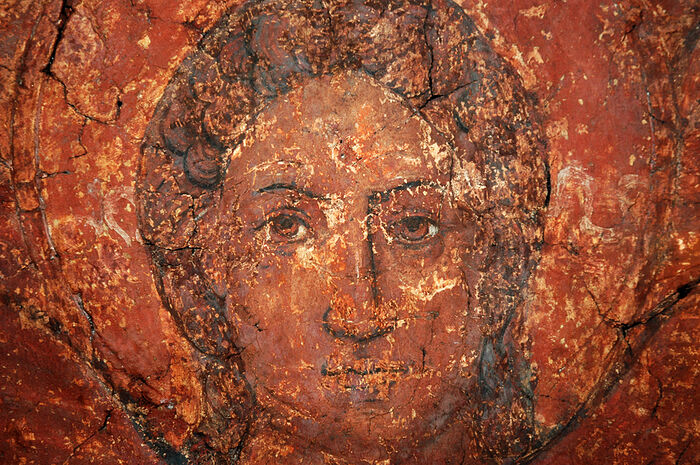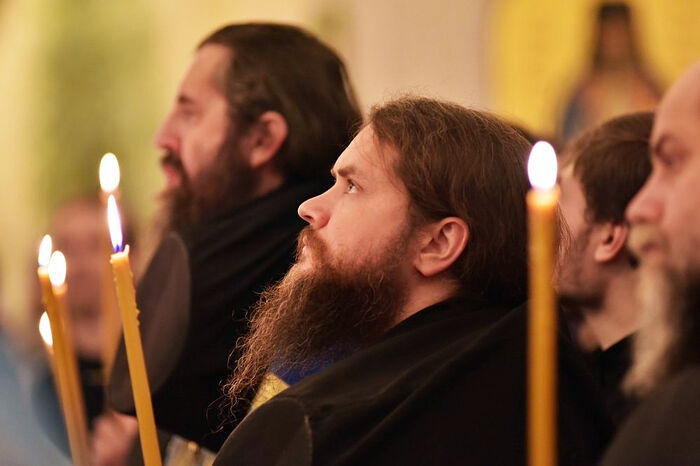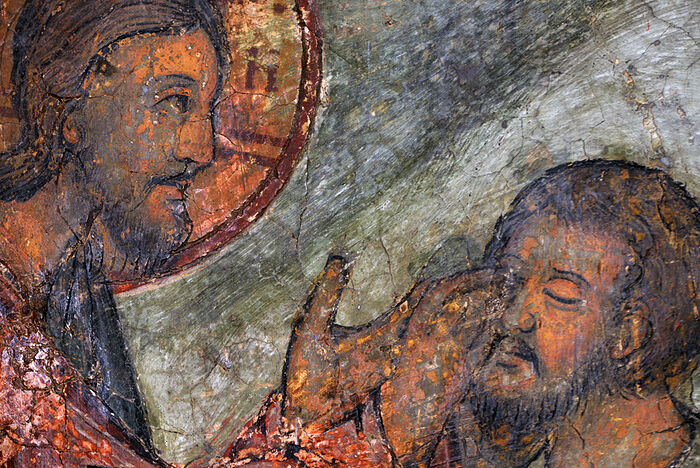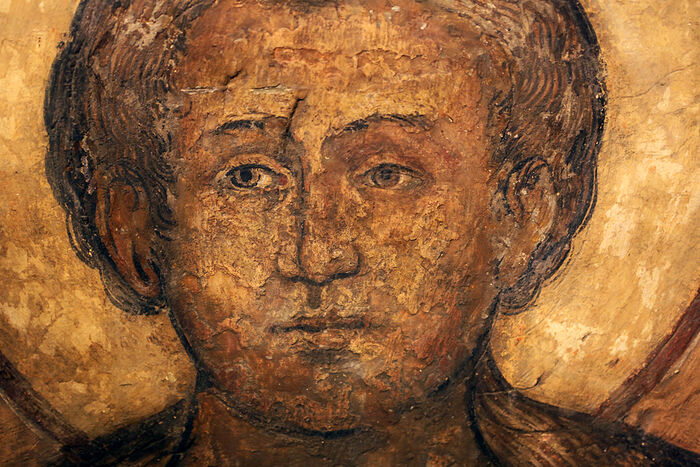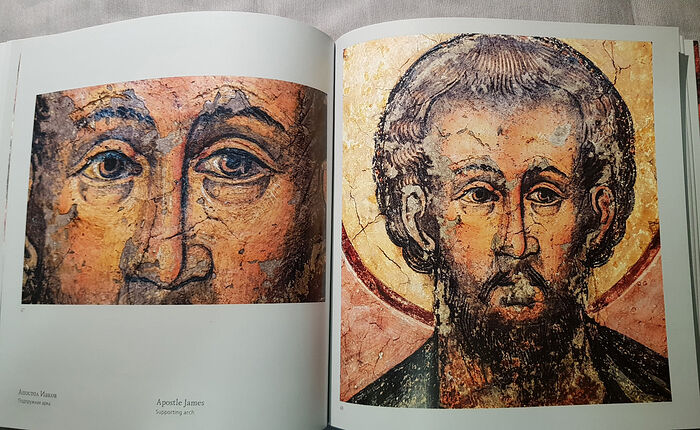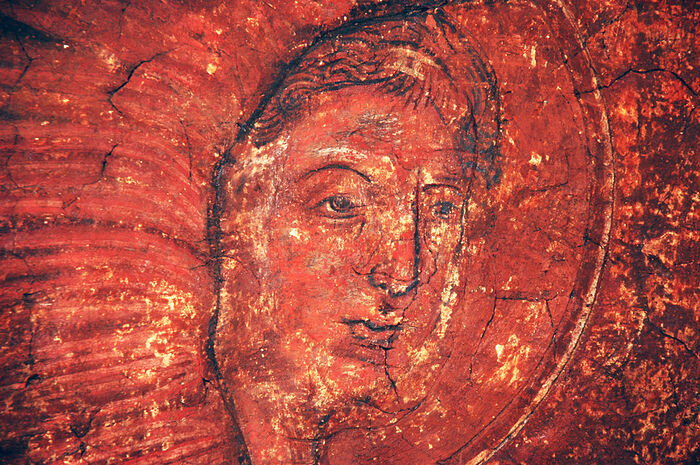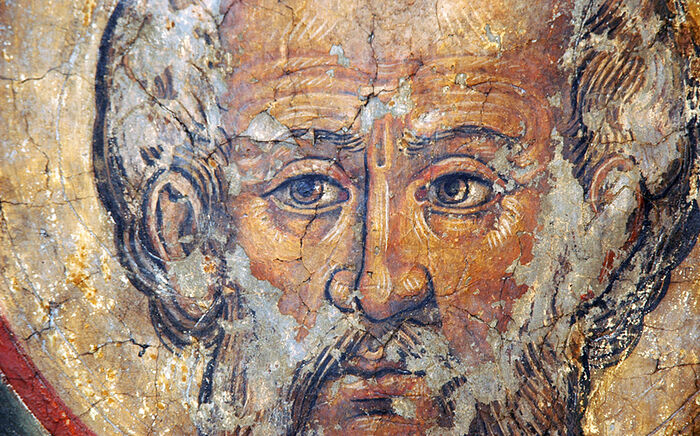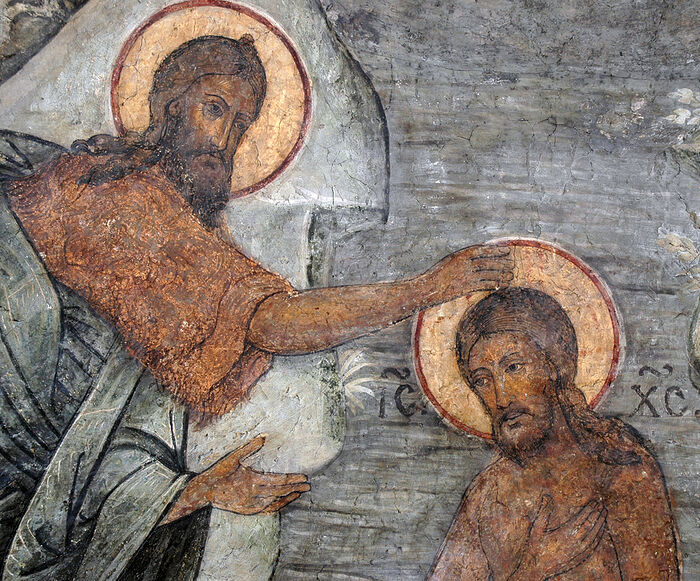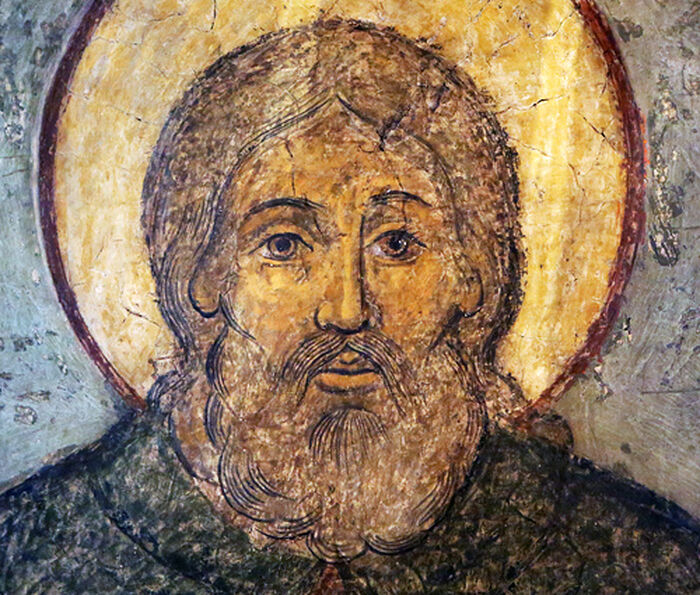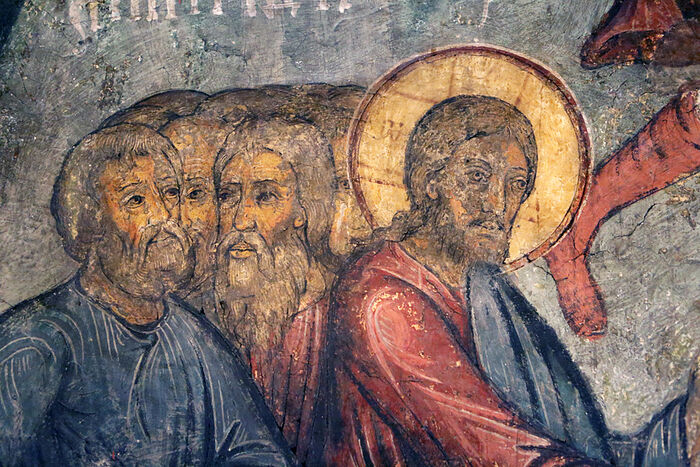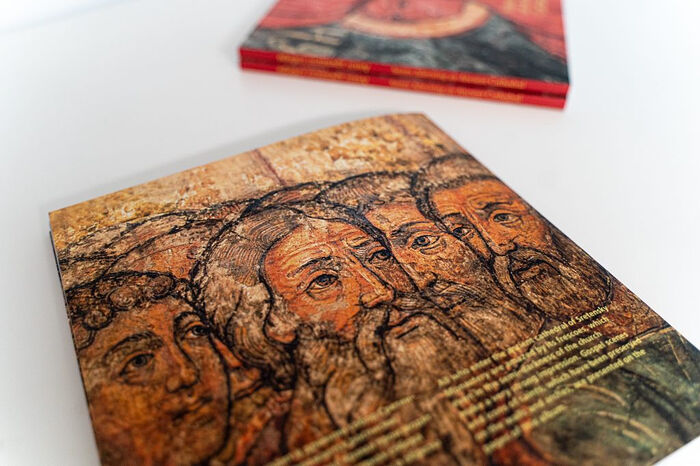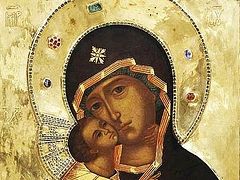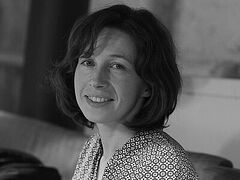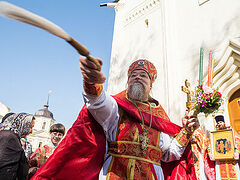In honor of the 625th anniversary of Moscow’s Sretensky Monastery, a photo album, Saints Adorning an Ancient Cathedral, dedicated to the frescoes of the Cathedral of the Meeting of the Vladimir Icon of the Mother of God, built in the early eighteenth century, was published. The album presents the most vivid and expressive images, preserving a special artistic beauty.
The album is presented in both Russian and English, and can be ordered on the site of the Sretensky Monastery bookstore.
In this interview, the compiler of the photo album, Sretensky Monastery’s Hieromonk Ignaty (Shestakov), invites us to focus on particular fragments—the faces of the Savior, the Mother of God, the Apostles, and the saints.
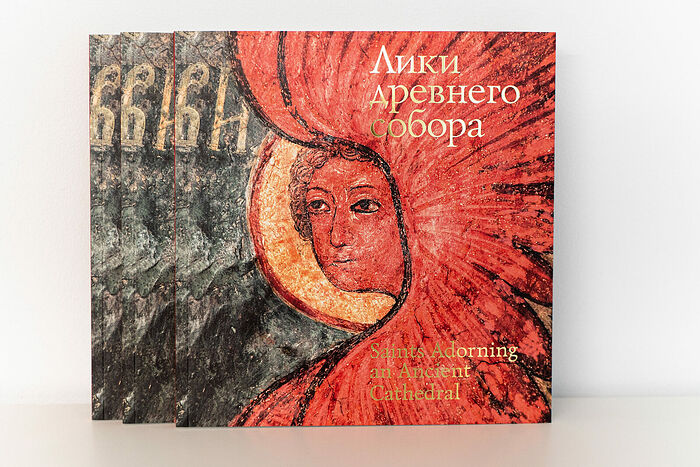 Saints Adorning an Ancient Cathedral: Frescoes of the Cathedral of the Meeting of the Vladimir Icon of the Mother of God. Sretensky Monastery Publishing House, 2022
Saints Adorning an Ancient Cathedral: Frescoes of the Cathedral of the Meeting of the Vladimir Icon of the Mother of God. Sretensky Monastery Publishing House, 2022
—Fr. Ignaty, Sretensky Monastery published the photo album Saints Adorning an Ancient Cathedral, dedicated to the frescoes of the Cathedral of the Meeting of the Vladimir Icon of the Mother of God, late last year. The majority of the photos are yours. How did the desire to make this album come about?
—When lengthy and extensive restoration was carried out in the cathedral in 2005, I took advantage of the opportunity and took quite a lot of photos of the different tiers of the cathedral, which was possible thanks to the extensive scaffolding. We managed to see quite a lot, and to examine and take rather high-quality photos.
There were other photographers taking pictures too then—mainly Vladimir Chistyakov, who, as far as I remember, took quite a lot of photos towards the end of the restoration. The White City publishing house published a photo album in 2009, mainly consisting of his photos. It was called Frescoes of the Sretensky Monastery Cathedral, timed to the fifteenth anniversary of the rebirth of our monastery. It was, in fact, a whole classical academic publication, describing the layout of the frescoes, with a large academic article by Svetlana Lipatova about the history of the monastery, the architecture of the cathedral, the history and restoration of the frescoes, and the iconographic program of painting and its artistic features.
However, the photos presented there also had some drawbacks, both in terms of the quality of the shooting angles, and in that, in my opinion, many really beautiful, interesting, and vivid things were missed.
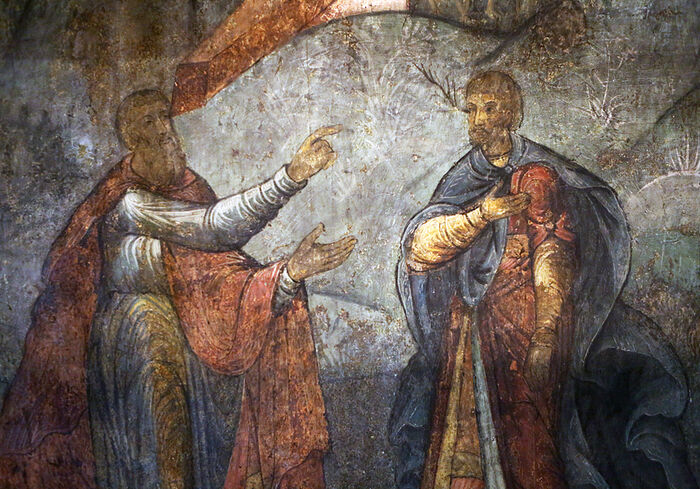 The Parable of the Mote and the Beam
The Parable of the Mote and the Beam
Our publishing house and I both kept the photos, which were only partially used on Pravoslavie.ru. Some of them have been roaming the internet for a long time: the icon of the St. Varlaam of Khutyn, the Baptism of the Lord, the Nativity of Christ; or the well-known image of the Parable of the Mote and the Beam. Someone grabbed it, and now it gets used in many articles about condemnation. It’s possible they were printed somewhere. A few years ago, we issued a small series of separately printed images as large postcards.
Last spring, we got the idea of doing a small album of the monastery frescoes, timed to the 625th anniversary of the founding of the monastery.
The idea of the publication is to select the most vivid and expressive frescoes. We’re not pretending to present and describe the entire ensemble of the cathedral’s frescoes with clear diagrams or fundamental academic articles. The novelty of this publication is that we have shown for the first time the most expressive images, and at the same time, things that are practically inaccessible, not visible to most of the faithful. We have brought these images closer, uncovered them.
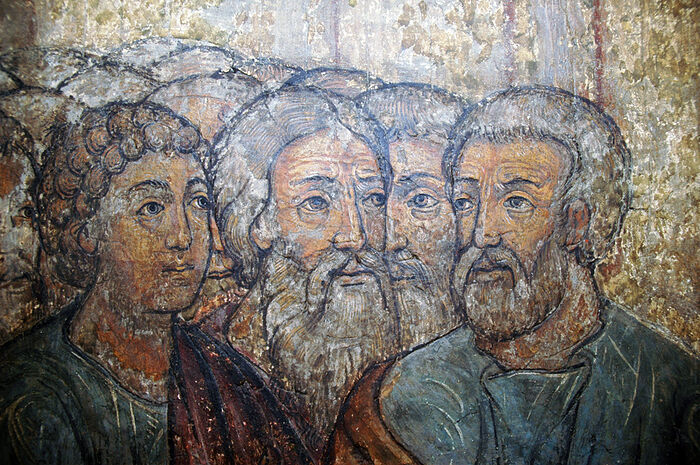 The Disciples and Apostles of Christ
The Disciples and Apostles of Christ
In fact, there’s a lot that even people who have been coming to our monastery for twenty years haven’t seen. First would be the faces and scenes hidden in the altar, in doorways and window arches, and some are on the walls just below the ceiling, or on the ceiling itself. Some scenes can be made out: Theophany, the Nativity of Christ, the Annunciation, and others, but it’s very difficult to see the faces of the Savior, the Mother of God, the saints, and the angels too closely. We tried, using the photos, to bring this prayerful beauty closer.
—The cathedral was closed for several months for restoration. Please tell us who painted the frescoes and why they needed to be restored?
—That first academic article from 2009 talked in great detail about the painter. The painters are believed to be artists from the team of Kostroma masters, and perhaps the Yaroslav masters. It’s possible it was a joint effort, but we don’t know any specific names.
As for restoration as such, that’s something that has to be done to some degree regularly. Serious destruction and changes occur over time.
Things decay in old buildings like our cathedral. Even if you make some kind of modern, new roof, if there’s already moisture there, and if the temperature changes often, then there is a salt buildup and ’re other undesirable phenomena, which we aren’t able to completely stop.
And there are other factors, like candle soot that settles on the frescoes. This is a well-known problem for all churches, both new, recently painted churches, and ancient ones. And, of course, there are all sorts of voluntary and involuntary physical factors, from people leaning or brushing against the frescoes. Fifteen years of the cathedral being used constantly have already passed since the last restoration. Of course, after a certain period of time, it’s good to do restoration work again—if not major, then at least something needs to be done.
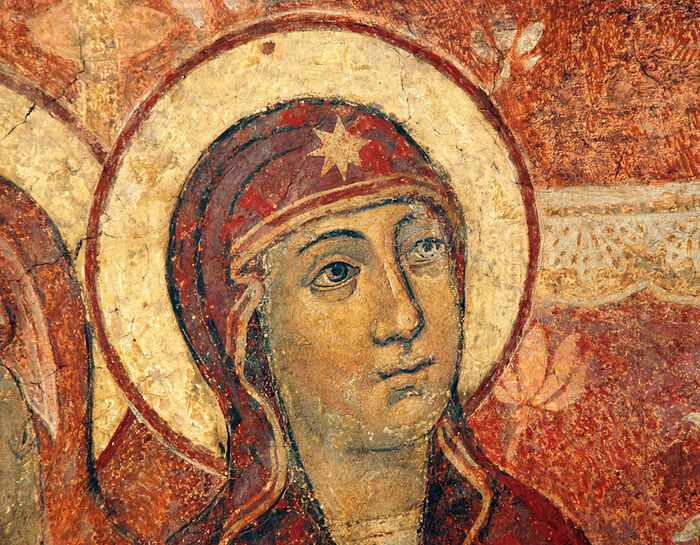 The Mother of God, from the Meeting of the Lord fresco
The Mother of God, from the Meeting of the Lord fresco
—What touched and impressed you the most in these frescoes when you were preparing the material for the photo album?
—The icons themselves impressed me. As a matter of fact, it gave me no peace. Maybe you can’t say the frescoes in our Sretensky cathedral are masterpieces of incredible height, but, nevertheless, in some of their expressiveness (especially if you start working on a photo album, you start looking more attentively, and some structure appears in the beauty), the faces themselves, and the scenes really are very interesting. In many of them, you can clearly trace the author’s original style and mood. When we made the album, we noticed a lot of joyful faces: of the saints, the cherubim, the Mother of God, Christ.
—And there’s a slight smile on some of them…
—Right. And indeed, it’s quite unusual and interesting. Joy shines in them. They’re very warm and joyful. And of course there are some interesting scenes from Gospel events and parables. We have the image of the Good Shepherd driving wolves out with a spear. Or there’s the scene about judging, that is, the Parable of the Mote and the Beam in the eye. Two people are standing there, one of them with a branch in his eye, and the other with literally a huge piece of timber. There are other expressive scenes, such as the very joyful and expressive cherubim of which there are many in the altar, and in the scene of the Ascension of the Lord.
—The cathedral’s interior color scheme draws the eye. Were these colors original, or are they from the last restoration?
—The range of colors has been preserved, of course. That’s something the restorers hardly changed at all. If they did change it, it was only for the better, I think. Of course, during restoration one of the things they always do is cleanse off the soot and salt that has built up, and they restore the lost fragments. But the frescoes themselves are authentic to what was already there. They’ve just been renewed, refreshed.
—The colors of the frescoes aren’t especially bright, but they’re harmonious. These colors probably seemed darker by candlelight, before there was electricity…
—The iconographers had technology, and understood the selection of these colors. So, naturally, they did it all harmoniously. Now, thanks to electric lighting, we can perhaps see even better than they did back then. It’s that way with many icons and frescoes. After all, much was discovered after they’d already started closing churches in the twentieth century. Because a lot was hidden under metal coverings. Now, thanks to the lighting, we see many things longer and better.
—What else would you like to add about the photo album itself?
—The release of such a book is important, because it has several goals at once. And it managed to achieve these to a greater degree.
We’ve presented something people really didn’t know about. It’s especially important, including for iconographers who started to develop their work here. We once had a very serious icon workshop in the monastery, and these people are working in many places now. Generally, such publications are very important for the professional field. Master craftsmen use them.
We managed to bring these holy faces closer to people through the album. And it’s a good gift for lovers of Russian art and architecture. It has a light and modern (in a good sense of the word) design and execution.
Of course, there’s always more that could have been added to this set of images. Nevertheless, taking everything into account, I think it turned out well. Readers really like it. It’s nice to hold in your hands, and there’s a lot of new things to discover in it.
As for the photos themselves, the album includes the work of several photographers. The preface was written by the professor of art history Andrei Leonidovich Batalov, which is also very important for us.
This publication can be interesting for foreigners too. We can safely say it’s a good gift.
It should be interesting for a large circle of readers: our parishioners, all who appreciate Church art, iconographers, art historians, teachers, and just all those who want to bring this beauty to the world.
Enjoy a video about the album:
Saints Adorning an Ancient Cathedral can be purchased from the Sretensky Monastery bookstore.

